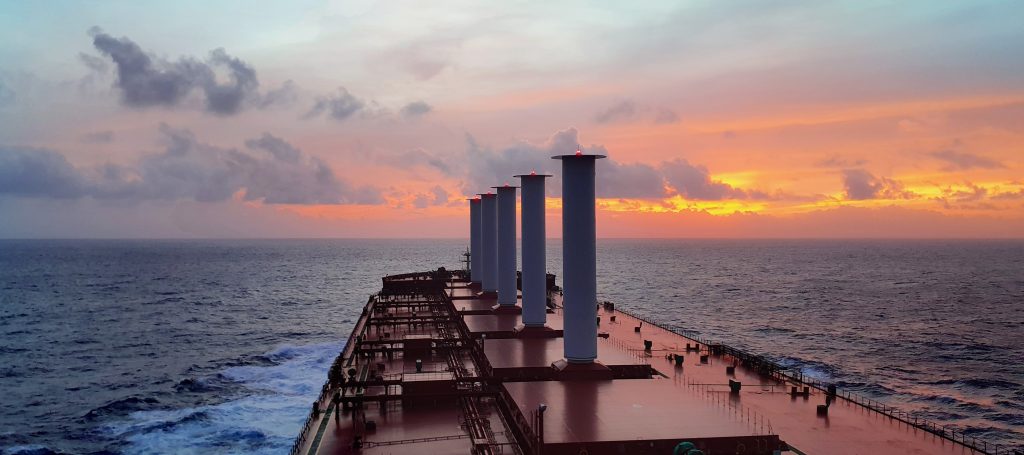In a research partnership with NAPA, Norsepower has been able to demonstrate the combined benefits of using the Norsepower Rotor Sail™ solution and NAPA’s Voyage Optimization together. The research also showed that for voyages with lower potential windpower to harness, the use of voyage optimisation more than doubled the benefits of using the technology in isolation by being able to select routes with more favourable conditions.
These numbers are important for shipowners considering adopting clean energy technologies on their vessels. While it might be tempting to consider each in isolation to ensure a clear and simple payback calculation, this approach does not accurately reflect the potential savings that can be made.
The savings are significant when considered in the context of the IMO’s approach to tightening the Carbon Intensity Indicator (CII) categories between 2023 and 2030. The reduction rates specified so far (-5% for 2023 and then -2% per year through to 2026) are intended to reduce the carbon intensity of international shipping by at least 40% by 2030, compared to 2008.
The research undertaken by Norsepower and NAPA indicates that the combination of the Norsepower Rotor SailTM and NAPA’s Voyage Optimization can reduce fuel consumption and emissions by up to an impressive 24%. This is particularly significant with the introduction of carbon taxes on the horizon as well as rising fuel costs. The figure is based on examination of historical AIS data from 384 voyages on routes between the US, Europe, China, Saudi Arabia and Australia. Detailed simulations were then conducted to compare this baseline with combinations of maintaining constant engine RPM alongside the application of the Norsepower Rotor Sail™ and voyage optimisation technologies whilst ensuring the same arrival time for the vessels.
Maintaining constant engine RPM reduced fuel consumption by an average of 9%. Adding voyage optimisation took this to 17%. Adding the Norsepower Rotor SailTM rather than voyage optimisation took it to 16%. The combination of all three measures took it to 24%.
The fuel savings achieved by the Norsepower Rotor SailTM were less than 4% on some voyages and greater than 10% on others – when considering fuel costs alone, 4% is a notable saving and 10% is considerable. However, adding voyage optimisation evened out these differences quite significantly, because the route could be varied to take advantage of local wind speeds without compromising arrival date and without heading the vessel into conditions where waves would counter some of the positive thrust generated by the wind propulsion solution.
NAPA Voyage Optimization determines the best possible voyage plan for a vessel to maximize energy savings, taking into account weather conditions throughout the voyage as well as each ship’s design profile and operational requirements. Norsepower’s Rotor SailTM is specifically considered in the ship performance models that deliver optimal routing.
It is worth noting that the average contribution of the technology to the total propulsion power is comparatively modest in the research simulations. For example, the vessel considered in this study for the Persian Gulf – China route was a VLCC equipped with three 35m high Rotor Sails with a diameter of 5m. Various concept studies have indicated that such vessels can accommodate at least six Rotor Sails of that size. Based on this, increasing savings beyond the results in this study is a real and significant prospect.
When wind propulsion meets a greater portion of total propulsion demand, conventional engines can be downscaled. The investment in a Norsepower Rotor SailTM would then be partly covered by the reduced CAPEX of the engines, building an even stronger case for the uptake of this clean technology. Achieving this needs the right framework and the right mindset to scale up the adoption of clean technologies. But, the numbers are starting to prove themselves and it’s only a matter of time before integrating wind propulsion into ships’ energy systems and using this alongside complementary technologies is an obvious choice.


